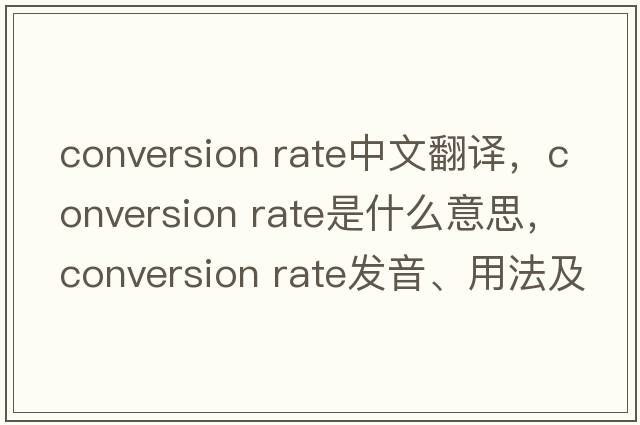autonomous robots中文翻译,autonomous robots是什么意思,autonomous robots发音、用法及例句

1、autonomous robots
autonomous robots发音
英: 美:
autonomous robots中文意思翻译
常用释义:自主机器人
自主式机器人计算机
[计] 自动机械手
自主型机械手
autonomous robots双语使用场景
1、Until a reasonably priced, easier method could be designed, autonomous robots were trapped in the lab.───除非设计出一个有合理的价格的更易行的对策,自动化机器人就只能被陷在在实验室了。
2、To test their algorithms, the researchers ran 20 hide-and-seek experiments with two autonomous robots.───为了测试他们的算法,研究人员在两个机器人之间进行了20次“捉迷藏”实验。
3、To test their algorithms, the researchers ran 20 hide-and-seek experiments with two autonomous robots.───为了测试他们的算法,研究者们用两个机器人进行了20次“隐藏-查找”实验。
4、At least, that's the thinking behind hospitals that are starting to use autonomous robots to transport goods throughout the building.───至少,医院正计划着使用自动机器人在整个大楼里运输医疗货物。
5、Everything I've seen in technology convinces me that autonomous robots are an inevitability.───我在科技行业的所见的一切足以让我确信出现自主机器人是不可避免的。
6、Some might call a ban on autonomous robots naive or complain that it would tie the hands of soldiers faced with irregular warfare.───某些人也许会认为禁止自主机器人的做法过于天真或者抱怨这样会使士兵们在面对非正规作战的时候束手束脚。
7、Autonomous robots going down, doing this sort of work.───自动控制的机器人将潜下去,开展工作。
autonomous robots相似词语短语
1、autonomous region───自治区
2、autonomists───n.自治论者,主张自治者
3、auto courts───汽车旅馆
4、autonomously───adv.自治地;独立自主地
5、autonomous syntax───自主的句法
6、autonomous───adj.自治的;自主的;自发的
7、autonomous syntaxes───自主的句法
2、高中英语作文robots in our future
Future Robots. Considering the advances coming out in robotics every year, including robots that can change expressions using moveable ‘flesh,’ eyelids, eyes and lips, it is difficult to say whether the future will usher in a world made easier and more comfortable by intelligent, autonomous robots, or one that will ultimately be destroyed by them.
To get a basic idea of how advanced robots will be in the next few decades, one could look at how far videogames have come since 1973. Back then, the most exciting videogame was Pong, in which a white dot acting as a tennis ball moved back and forth across a black screen, manipulated by players who moved the “rackets” up and down by means of a joystick. Today, several games have the ability to figure out a human player’s strategy and so adjust its settings to work around it, like Starcraft and the Earth Trilogy, not to mention having graphics that have far, far surpassed the plain, white bars of Pong.
Future Robots
Even now, scientists have already developed the components for more advanced sociable future robots, such as emotional recognition and expression systems—vital if the goal is to make robots as human-like as possible. In the military, researchers are predicting that autonomous, combat-ready robots can be deployed in as early as 5 years. In research facilities, walking humanoid robots like ASIMO continue to be improved, while the creators of Osaka University’s Child-robot with Biomimetic Body, or “CB2,” say the child robot can now develop social skills by interacting and watching human facial expressions, albeit slowly. The four-foot, four-inch humanoid is designed to learn just like a human baby: In two years, the goal is for the kidbot to be speaking in basic sentences, matching the intelligence of a two-year-old human child.
Given the exponential quality that technology is capable of, no one can say for sure if and when the line between human and robots will be blurred completely. Rapid advancements in computer technology and over 50 years of research into AI programming has brought the reality of genuinely thinking machines closer. Already we have robotic platforms that mimic human thought, understand speech, play table tennis and beat human chess players. These are feats that just a few decades ago were deemed impossible and in future robots, they may become much more.
In a famous quote, American scientist and economist Herbert Simon said, “It is not my aim to surprise or shock you—but the simplest way I can summarize is to say that there are now in the world machines that can think, that can learn and that can create. Moreover, their ability to do these things is going to increase rapidly until—in a visible future—the range of problems they can handle will be coextensive with the range to which the human mind has been applied.” Certainly, the possibility of future robots even more intelligent than humans seems just as imminent.
The premise of intelligent future robots rising up against their human masters has long been utilized by many writers and artists, ever since Karel Èapek first introduced the concept in his 1921 play, R.U.R. (Rossum's Universal Robots). This is an outstanding fear of many, not helped by Hollywood depictions of evil cyborgs such as terminators and intelligent machines bent on destroying the human race. But in his play Èapek also suggests that robots are helpers made specifically to eliminate the drudgery in human lives: to perform tasks that are too dull or dangerous to do. The term ‘robot’ after all, was coined from the Czech word for ‘slave labor.’
Industrial, medical and household robots have certainly changed the way humans live. Factories, hospitals and homes have benefited enormously, and though far from the anthropomorphic laborers envisioned by Èapek, these robots do get their jobs done very efficiently—far better I daresay than their human counterparts can.
They are less exciting than intelligent androids for sure, but these practical, efficient robots are the ‘bots I would like to see more of in the future. I would like robot companions that can assist the elderly and disabled, robots in hospitals even more advanced than the da Vinci Surgical System, educational robots that can revolutionize learning in schools, and most importantly, robots that are more affordable and readily available to everyone. If it is true that millions of robots will be employed throughout the world in the coming years, then the law of economics would certainly have to play its part.
I am a big science fiction fan, and I have to admit the entire idea of a future where humans and robots coexist is exhilarating. Whether this future of robotics is headed towards harmony like the Jetsons or a more dark future as depicted in the Terminator movies, I can’t say. The military would have us think the latter true. For now though, I continue to be hopeful rather than fearful of Man’s future robotic achievements.
--------------------
We can expect to see a dramatic increase in the pace of permanent job outsourcing to robots in this decade.
A prime example of this is the Taiwanese company Foxconn’s recent announcement that they plan to go from the 10,000 robots they currently employ to 300,000 next year and then 1,000,000 three years from now.
The company is the largest global manufacturer of computer components – with high-end makers like Apple, Sony and HP among it’s customers.
The robots will takeover jobs involving assembly, welding and spraying.
That’s a pretty exponential rate of growth and human replacement. One that will become commonplace over the next few years.
-------------------------
The talker of the town
Atsuo Takanishi and his Ph.D. student Kotaro Fukui at Waseda University in Tokyo thought they had come up with a simple solution to a complex problem. Want a robot to speak like a human? Why not just build it like a human, vocal cords and all? Unfortunately, though, that´s where the solution´s simplicity ends. In order to simulate the flexibility and resonance of the biological structures, the group had to painstakingly re-create the entire human vocal system in this, the sixth version of the Waseda Talker. They modeled the human tongue, vocal cords, lips, teeth, soft palate and lungs out of plastics and rubbery polymers to mimic the real thing. The result is uncannily clear, natural speech-assuming you speak Japanese.
版权声明: 本站仅提供信息存储空间服务,旨在传递更多信息,不拥有所有权,不承担相关法律责任,不代表本网赞同其观点和对其真实性负责。如因作品内容、版权和其它问题需要同本网联系的,请发送邮件至 举报,一经查实,本站将立刻删除。














